Sri Lankan rice dishes weave a rich culinary narrative, showcasing the country's diverse food heritage. Rice, a fundamental element, transforms into various textures, from fragrant coconut-infused grains to hearty red rice. Accompanying this staple is a range of curries, featuring both meat and vegetables, creating a symphony of flavors. Sambols and chutneys add an extra layer of taste, providing a delightful contrast. Whether it's a celebratory creamy rice pudding or inventive stir-fried creations, Sri Lankan rice dishes reflect an intermingling of spices, coconut, and local ingredients. The cuisine invites a sensory exploration through a diverse and aromatic landscape of flavors.
Biryani
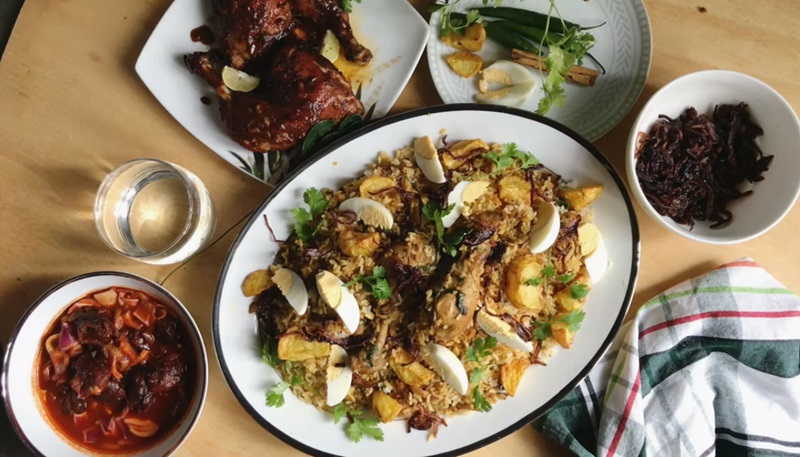
Biryani is a popular and flavorful rice dish in Sri Lanka that is loved by many. It is a fragrant and rich dish that combines aromatic rice with a variety of spices, meat, and vegetables. The rice used in biryani is long-grain rice, such as basmati, which is cooked with spices like cinnamon, cardamom, cloves, and bay leaves. The rice is usually parboiled before being layered with the meat or vegetables in a large pot. The meat used in biryani can vary, with options like chicken, mutton, or fish being commonly used. The meat is marinated with a blend of spices, yogurt, and sometimes lemon juice before being cooked with onions, tomatoes, and other ingredients to create a flavorful base. The layers of rice and meat are then cooked together, allowing the flavors to meld and the rice to absorb all the deliciousness. Biryani is often garnished with fried onions, cashews, and raisins for added texture and taste. Served hot, biryani is a complete meal on its own, offering a perfect balance of spice and aroma. It is often enjoyed with raita, a yogurt-based side dish, or a simple salad. Biryani is a must-try dish for anyone looking to explore the diverse and delicious cuisine of Sri Lanka.
Idli
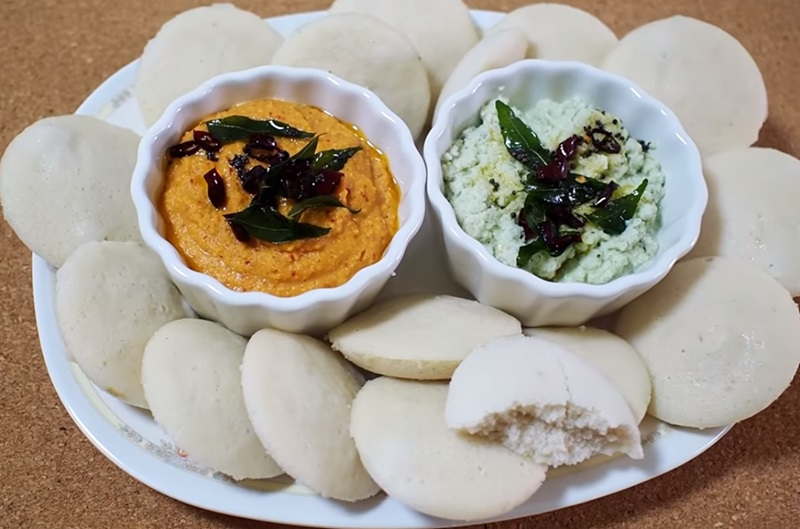
Idli is a cherished breakfast dish in Sri Lanka. This soft and fluffy delicacy is crafted from fermented rice and black lentils, captivating both locals and tourists. The preparation involves soaking rice and lentils overnight, followed by grinding into a smooth batter. After fermenting for hours, beneficial bacteria develop, imparting Idli's distinct taste and texture. The batter is poured into molds and steamed, resulting in a light, spongy rice cake. Typically served with chutney, lentil-based sambar, and coconut chutney, Idli can also be enjoyed plain or with curry. Beyond its deliciousness, Idli is a nutritious option—low in fat, easily digestible, and rich in carbohydrates and protein. Its versatility makes it suitable for breakfast, lunch, or dinner. Whether familiar with Sri Lankan cuisine or seeking a culinary adventure, trying Idli is a delightful experience sure to please your taste buds.
Puttu
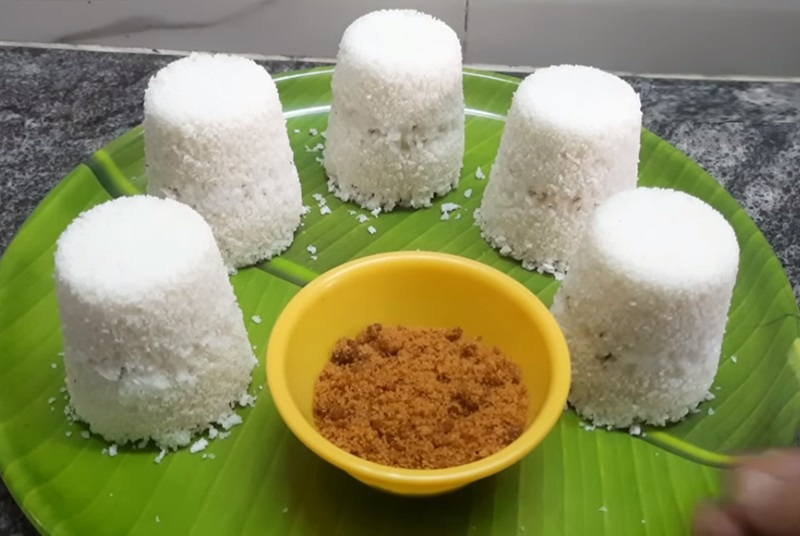
Puttu, a beloved rice dish in Sri Lanka, is crafted from steamed rice flour, coconut, and a dash of salt. Versatile and suitable for breakfast, lunch, or dinner, the unique preparation involves a special cylindrical steamer known as a puttu maker. Rice flour is mixed with water and salt, creating a crumbly texture, and layered with grated coconut in the puttu maker. Positioned atop a steamer, steam permeates through, cooking the mixture into soft, fluffy puttu. Commonly paired with accompaniments like chickpea curry, dhal curry, or spicy sambal, puttu is also enjoyed with bananas or papaya. The combination of airy rice flour and aromatic coconut yields a delightful texture and flavor, cherished by locals and visitors alike. This nutritious dish, low in fat and cholesterol, is a staple in Sri Lankan cuisine, appealing to all ages. Whether relished during breakfast, lunch, or dinner, puttu stands as a satisfying and wholesome showcase of the rich flavors inherent in Sri Lankan culinary traditions.
Lamprais
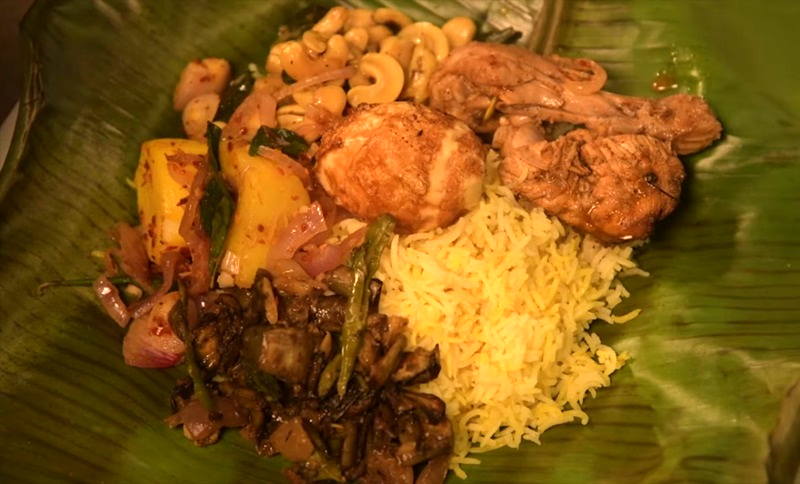
Lamprais stands as a beloved Sri Lankan culinary delight, offering a rich tapestry of flavors through its meticulous combination of spices. The term "lamprais" traces its origins to the Dutch word "lomprijst," translating to a rice packet. This gastronomic masterpiece comprises two distinctive curries - a trinity of meats (often beef, pork, and chicken) and ash plantain with aubergine. Accompanying these are seeni sambol, belacan, and frikadeller meatballs, all enveloped in rice simmered in stock, skillfully encased in banana leaves and baked to perfection. The rice preparation involves the sautéing of rice (raw short-grain) with onions and spices in ghee (although butter can also be used), followed by cooking in a flavorful meat stock. While the traditional recipe doesn't include it, the addition of a deep-fried hard-boiled egg has become a popular, albeit non-traditional, enhancement to this culinary symphony.
Yellow Rice
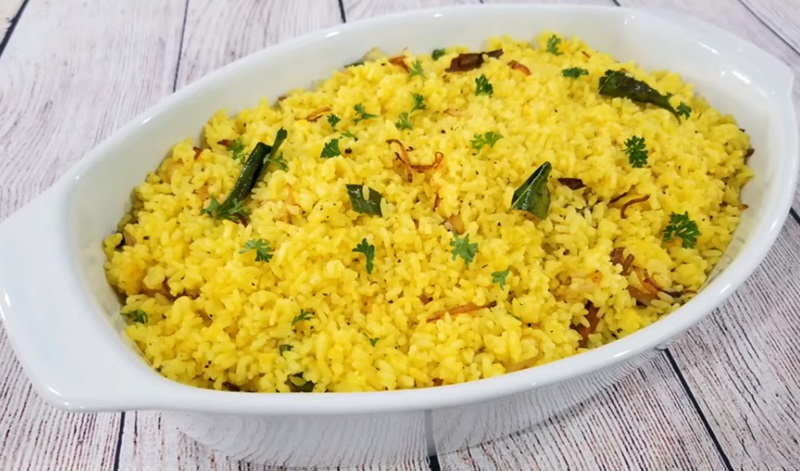
Yellow rice is a cherished and aromatic delicacy in Sri Lanka, celebrated for its vibrant hue and enticing fragrance. The dish, locally referred to as "kaha buth" in Sri Lanka, is crafted by infusing white rice with annatto, saffron, or turmeric, lending it the characteristic yellow tint. These natural ingredients not only contribute to the rice's vivid color but also enhance its flavor profile. The culinary artistry of yellow rice in Sri Lanka reflects a fusion of Indonesian and local Sri Lankan influences, showcasing a delightful blend of cultural culinary traditions. This dish not only captivates the senses with its striking appearance but also offers a palatable journey through the diverse and harmonious flavors inspired by the region's rich culinary heritage.
Rice and Curry
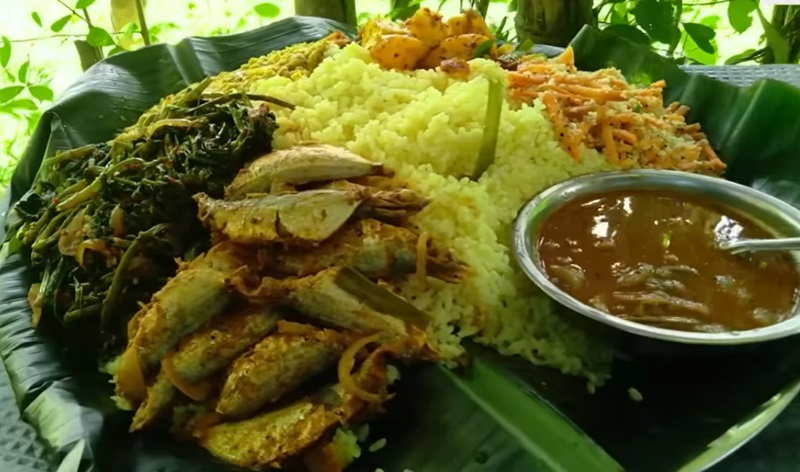
Sri Lankan rice and curry dishes are a delightful culinary experience that showcases the rich flavors and vibrant colors of the island's cuisine. This traditional meal consists of steamed rice served alongside an array of curries and accompaniments. The star of the meal is the rice, which is typically cooked to perfection, fluffy and fragrant. It serves as a neutral base to complement the bold and spicy flavors of the curries. The curries are the heart of the dish and come in various forms, such as vegetables, meat, or seafood. They are cooked with a blend of aromatic spices, including cinnamon, cardamom, cloves, and curry leaves, resulting in a burst of flavors that tantalize the taste buds. Accompaniments play a crucial role in enhancing the overall experience. These can include sambols, chutneys, pickles, and papadums, all of which add a range of textures and flavors to the meal. Sambols, made with coconut, chili, and lime, provides a refreshing and spicy kick. Sri Lankan rice and curry dishes are a celebration of the country's diverse culinary heritage. Each region offers its own unique twist, ensuring that every meal is a delightful and memorable experience for both locals and visitors alike.
Kiribath
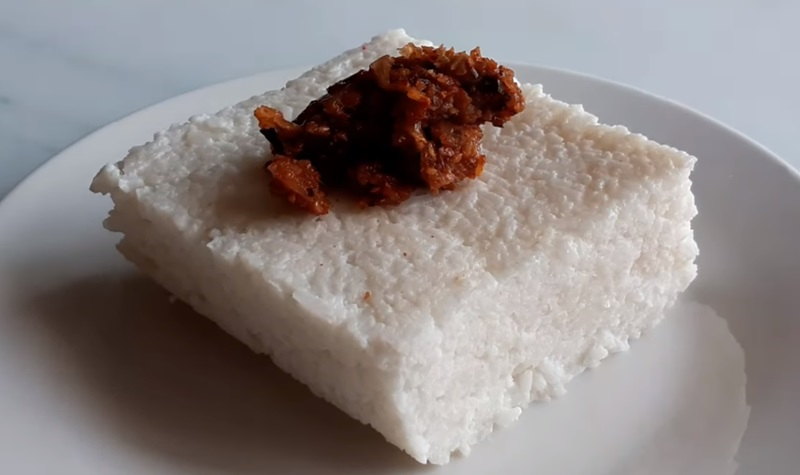
Kiribath, a cherished Sri Lankan tradition, holds a special significance in the hearts and taste buds of its people. Translating to "milk rice," the dish is crafted by cooking rice in a blend of coconut milk and water, yielding a creamy and luxurious texture. Often prepared during auspicious occasions and festive seasons like the New Year, kiribath is a breakfast staple but can also serve as a main meal or dessert. The cooked rice is shaped into a square or rectangular cake, and then cut into diamond-shaped pieces before serving. It is served with condiments like lunumiris and/or seeni sambol.
Kola Kanda
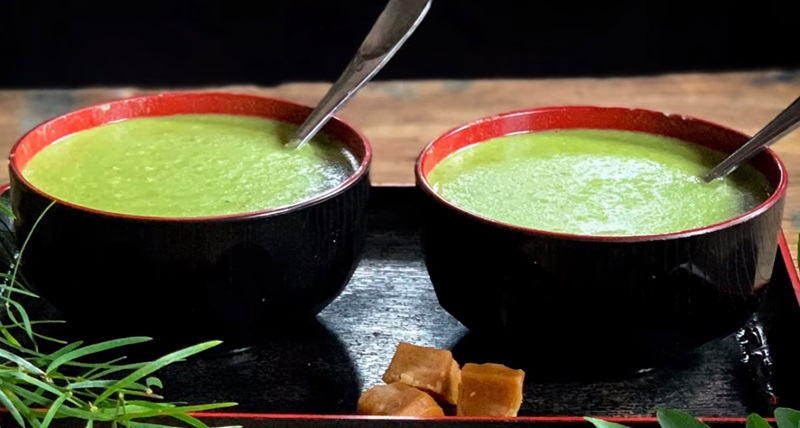
Kola kanda, a customary herbal congee, is a nourishing blend of raw rice, coconut milk, and the invigorating juice extracted from medicinally valued leafy greens. The selection of leaves, such as gotukola, karapincha, welpenela, iramusu, hatawariya, Polpala, karapincha, or ranawara, is contingent upon the specific ailment targeted for prevention or cure. This herbal concoction, often consumed during breakfast, is served piping hot and accompanied by a piece of jaggery (palm sugar). The inclusion of jaggery serves a dual purpose, not only imparting sweetness but also balancing the potential bitterness of the herbal leaves. Kola kanda stands as a testament to Sri Lanka's culinary tradition, where the therapeutic properties of indigenous ingredients are harmoniously woven into a comforting and healthful dish.
Diyabath
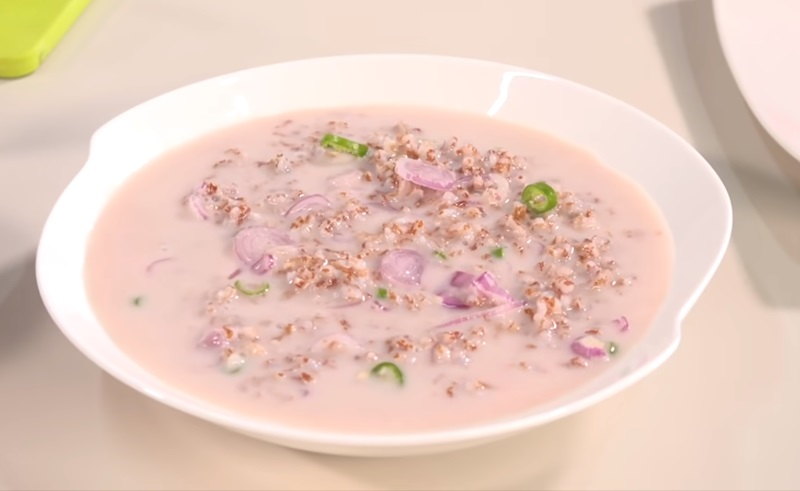
Diyabath, a cold soup ingrained in the culinary heritage of Sri Lanka, is a traditional breakfast dish enjoyed by the indigenous population. Crafted from rice left to ferment overnight, the dish unfolds its unique flavors when blended with coconut milk, onion, garlic, and raw chili. While historically significant, Diyabath has witnessed a decline in regular consumption, reflecting shifts in contemporary lifestyles. The meticulous preparation involves allowing the rice to undergo fermentation, resulting in a distinctive taste and texture. This chilled soup stands as a testament to Sri Lanka's culinary diversity, embodying the fusion of fermented rice with the richness of coconut and the boldness of aromatic spices. Although not a daily indulgence, Diyabath preserves its cultural significance as a flavorful and refreshing breakfast option rooted in the traditions of the indigenous people of Sri Lanka.
Lavariya
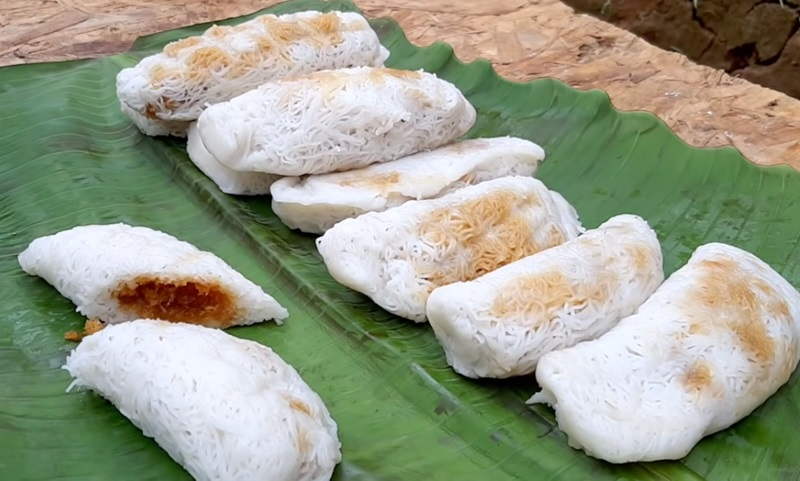
Lavariya, a beloved Sri Lankan confection, is a delectable sweet dumpling featuring caramelized coconut encased in a string hopper (Idiyappam). This delightful treat is commonly enjoyed during breakfast or in the afternoon, paired with tea and bananas. The preparation begins by combining rice flour with hot water, oil, and a touch of salt, resulting in a smooth, kneaded dough. Using an 'idiyappam' press or a sieve, the dough is transformed into thin vermicelli-style noodles, carefully arranged on banana leaves. The filling, known as "Pol Pani," comprises grated coconut, moong dal, and jaggery syrup, forming a half-moon shape within the rice flour noodles. The final creation is wrapped in banana leaves and steamed to perfection before being served, showcasing the intricate fusion of textures and flavors that define Lavariya's place in Sri Lankan culinary tradition.



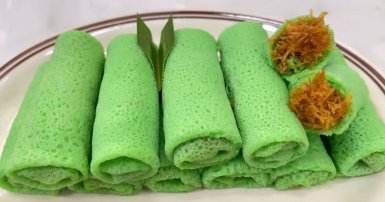


-1709813013.jpg)


